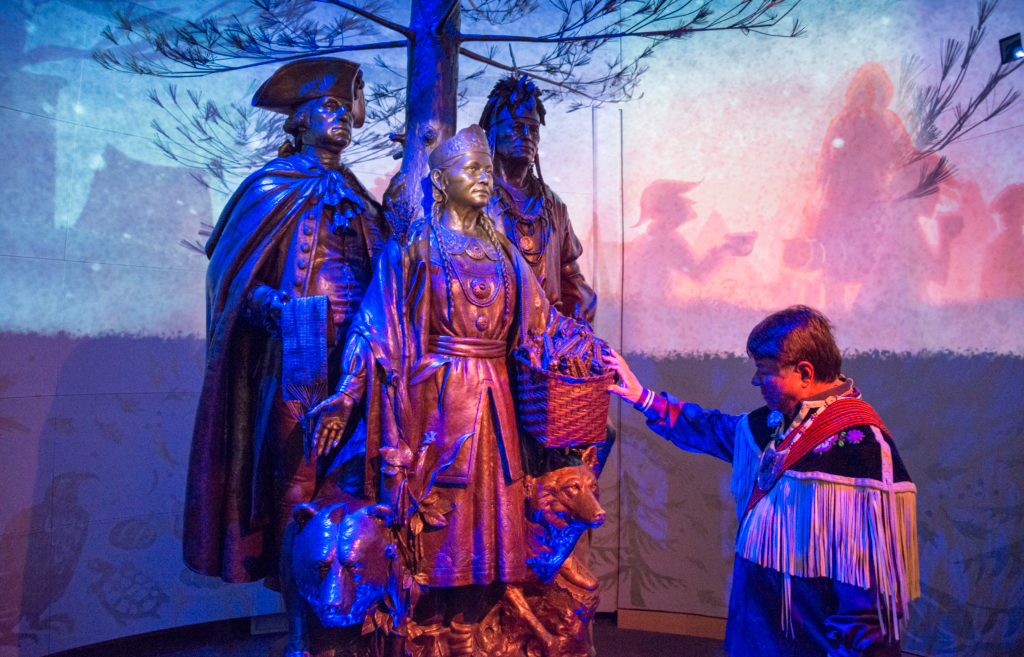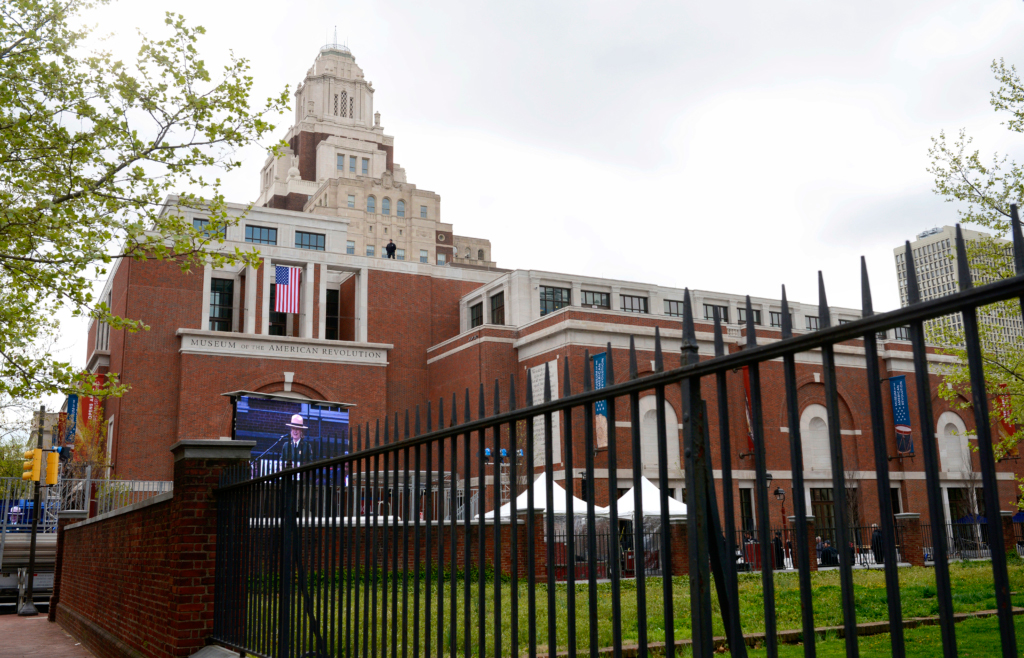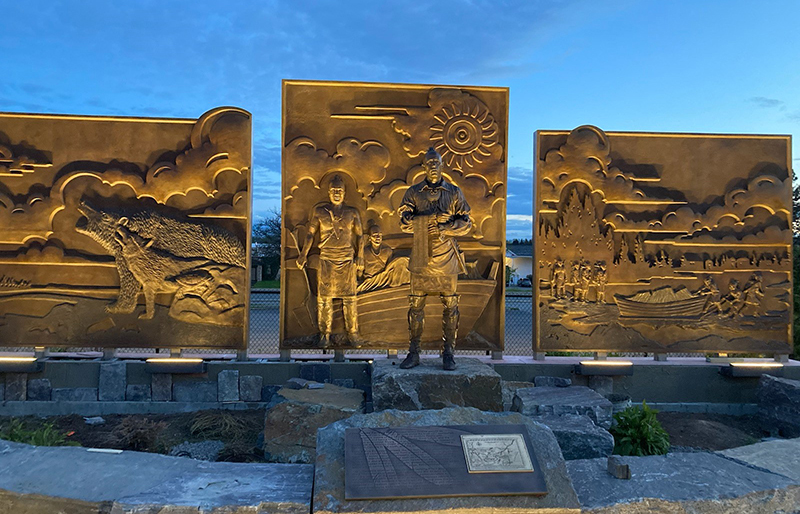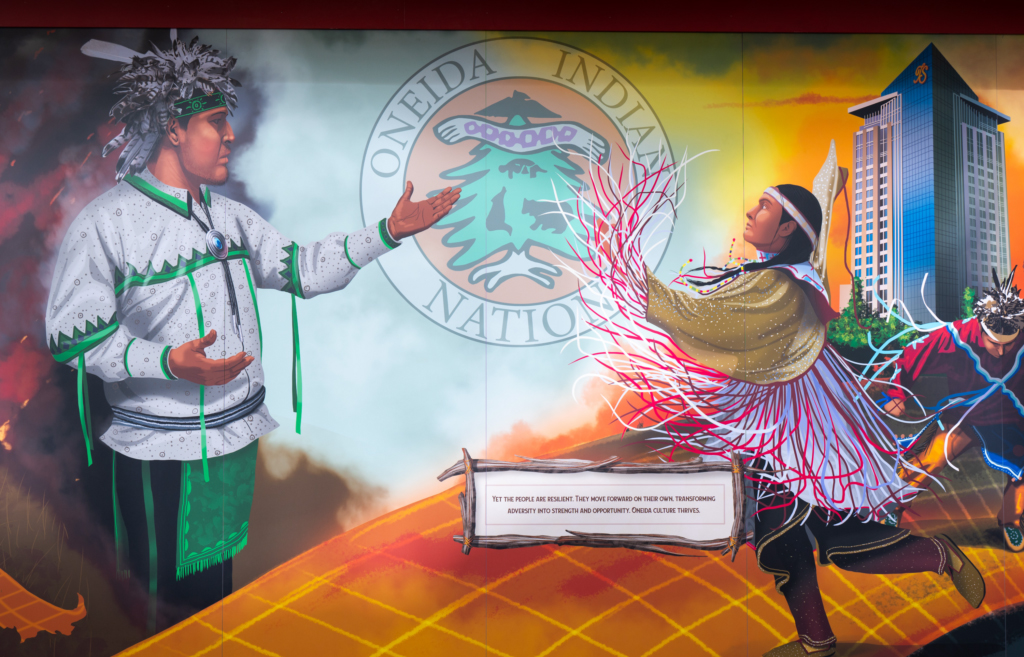OUR STORY, MEMORIALIZED
Beyond its own facilities and programs in Central New York that promote American Indian language and culture, the Oneida people have taken a leadership role in supporting the Smithsonian Institution’s National Museum of the American Indian and the Museum of the American Revolution to memorialize its rich history as America’s First Allies for future generations.
Allies in War, Partners in Peace | Smithsonian Museum of the American Indian

Standing nearly 20 feet high in the prestigious National Museum of the American Indian in Washington, D.C., the Allies in War, Partners in Peace statue commemorates the bond between two nations – the Oneida and the United States.
Oneida Indian Nation Gallery | Museum of the American Revolution

The Oneida Carrying Place | Public Display in Downtown Rome

In May of 2021, the Oneida Indian Nation, together with officials from Oneida County and the City of Rome, unveiled a new bronze sculpture and public artwork that commemorates the historic Oneida Carrying Place, a vital mode of transportation, trade and commerce before and during the Revolutionary War.
The Oneida Story Mural | Public Display at Wynn Hospital

The Oneida Indian Nation unveiled two new public artworks at Downtown Utica’s Wynn Hospital. Part of the Nation’s $1 million donation in support of the new hospital, these displays include a 200’ long outdoor mural and an interior mural, both telling the incredible story of the Oneida people’s historical and cultural legacy in Upstate New York.

